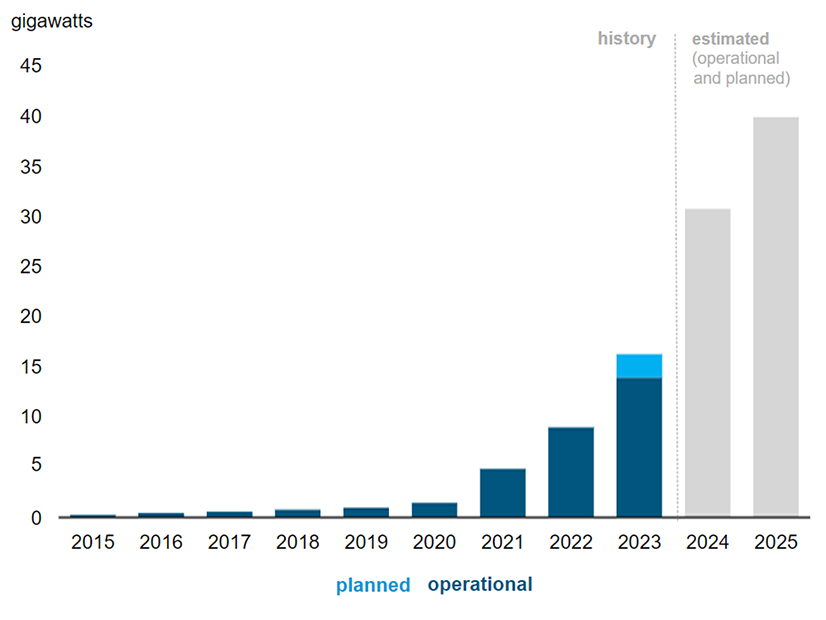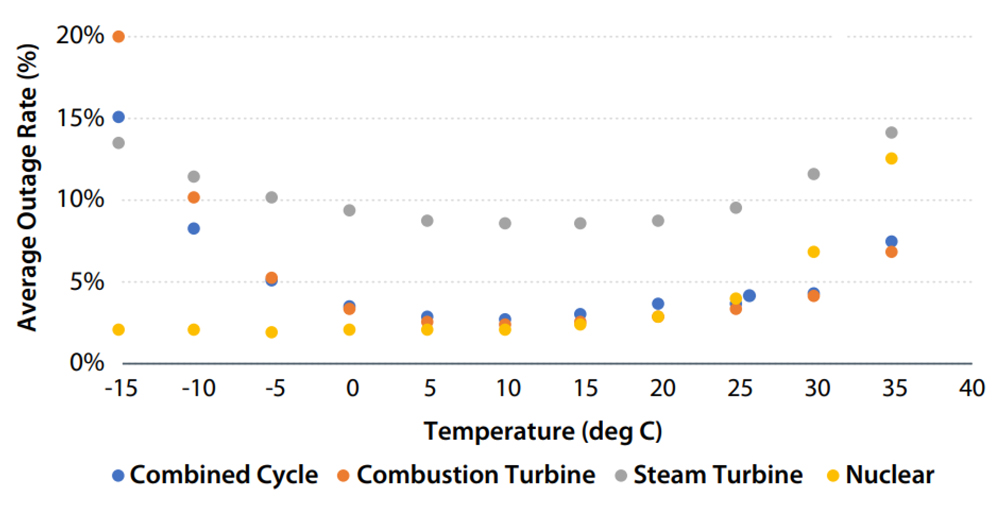With electricity demand expected to undergo rapid acceleration by 2028 while generation moves from fossil fuels to renewable resources, stakeholders must “pursue the full range of technology, planning and operation solutions” to meet resource adequacy needs, the U.S. Department of Energy said in a report released this week.
DOE said “The Future of Resource Adequacy,” published April 17, was meant to highlight the challenges of maintaining resource adequacy in the face of the changing grid and spread awareness about potential solutions, as well as the “unprecedented funding” for grid infrastructure available through the Infrastructure Investment and Jobs Act and the Inflation Reduction Act.
The report identified several growing threats to resource adequacy, which NERC defines as “the ability of the electric system to supply the aggregate electrical demand and energy requirements of the end-use customers at all times.” Growth in demand is chief among these, but the rising incidence of extreme weather events because of climate change is another factor; DOE noted that the U.S. experienced 28 weather and climate disasters in 2023 that each caused more than $1 billion in damages.
There are no simple answers to these problems, DOE said, pointing out that the complexity of the grid makes electric reliability “intrinsically a systemwide property that cannot be ensured by any individual resource or technology.” The report recommends “holistic” thinking on reliability.
Resource adequacy goals, for example, can be met using a variety of resource types to ensure that a shortage of one resource — such as sunlight or natural gas — does not imperil the entire system. Drawing on data from the National Renewable Energy Laboratory, DOE noted that synchronous generation facilities present a wide range of responses to extreme temperatures, with combustion turbine plants showing the highest rate of outages at temperatures of -15 degrees Celsius but steam turbines leading in outages at 35 C.
The report noted that new natural gas plants are often grid planners’ “first response … to meet resource needs” because of their “general flexibility, low cost and high-capacity credit, as well as familiarity with the technology.” But the temperature data suggest this approach could cause problems with reliability during extreme weather.
Instead, DOE presented the example of Xcel Energy, which will replace an 1,879-MW coal facility in phases through 2030. Rather than replacing the plant with a natural gas combined cycle plant as originally proposed, the utility decided to build two smaller combustion turbines, 710 MW of new solar capacity, a long-duration storage facility and “transmission lines to facilitate interconnection of up to 1.2 GW of new wind resources.” The utility said this plan would reduce customer costs and its carbon footprint, “all while preserving reliability.”
DOE also noted the accelerating deployment of energy storage systems, particularly paired with renewable generation to allow the energy from their most productive periods to be shifted to other times of day. Citing data from the Energy Information Administration, the report noted that battery capacity on the grid is expected to more than double by next year.
Hybrid storage systems at existing generators, or attached to existing proposed projects, have the additional strength that they “generally [do] not have to re-enter the interconnection queue … cutting down on one of the biggest hurdles to greenfield deployment,” DOE noted.
“The unprecedented availability of tax credits and other funding opportunities through the [IIJA] and IRA creates a compelling environment for exploring all of these opportunities,” DOE said. “Utilities have both the opportunity and the means to plan and deploy a variety of clean technologies to maintain and improve resource adequacy along the path toward the sustainable electric grid of the future.”



